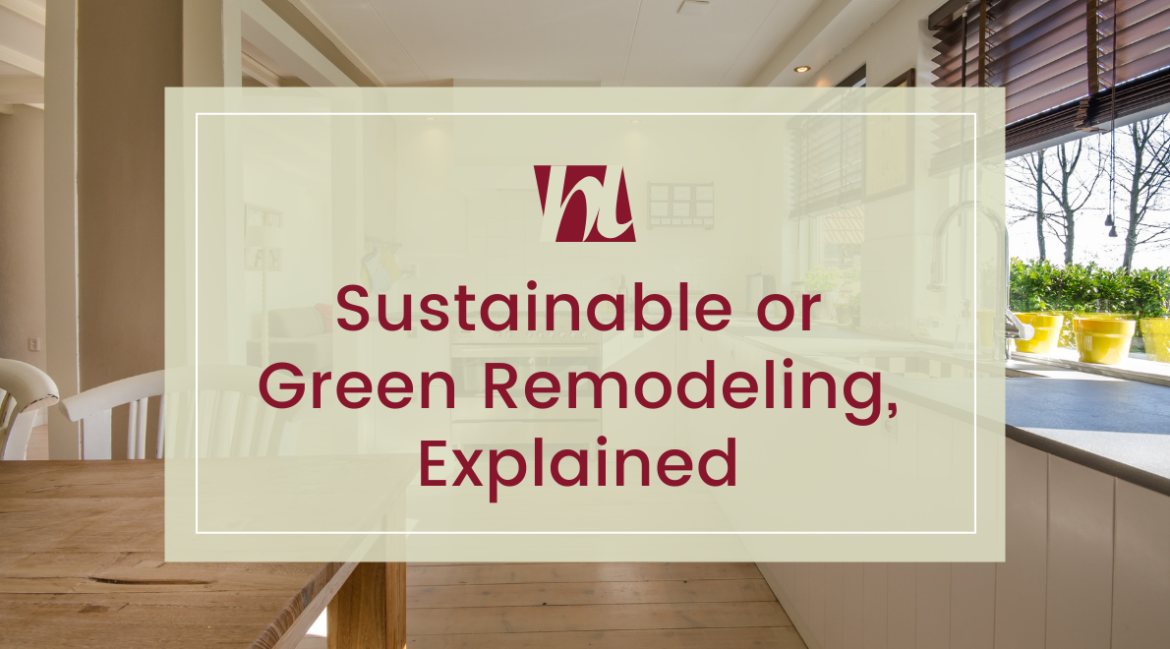Sustainable or Green Remodeling, Explained
When you make your home more environmentally friendly through green design and construction, you reduce the cost of operating your home by conserving energy and water, while saving on energy systems and appliance maintenance. You also create a healthier environment for your family and your pets.
Sustainable home construction involves more than choosing greener building materials. For homeowners who wish to reduce their carbon footprints, here is a brief look at what you can expect as you start the green building process.
What is a green home?
A green home is designed, constructed, and operated in ways that reduce or eliminate negative environmental impacts. A green home can even have a positive effect on the climate and natural environment. Green buildings preserve natural resources and improve the quality of our lives. Building green is a commitment to the five pillars of green building: energy, health, materials, water, and place.
What are the attributes of a green home?
Green home design considers the quality of life of the home’s occupants in the construction, and operation of the home. In a green home, energy, water, and other utilities and resources are used to maximum efficiency. Green homes often use renewable energy sources, such as solar or geothermal energy, for heating, cooling, and electricity. Adaptability is another consideration in green home design. This allows the home to evolve with changing environmental factors or advances in green technology.
Most green home designs incorporate non-toxic, ethical, and sustainable materials in the construction process and finishes. These choices are not only healthier options for your family, they can improve indoor air quality. There are also options to reduce or recycle materials to reduce waste.
What are the costs and benefits of a green home?
While you may find that some renewable materials require a larger upfront investment than their conventional counterparts, reduced utility costs over the long-term often offset the costs of construction. Additionally, green homes often have higher home values than their conventional neighbors. If you are planning a remodel, refinancing is one good tool to accomplish your project.
How to choose sustainable materials when remodeling your home
The first step in building a green home is to create a detailed plan with guidelines to help you track your budget. Then, work with an architect, designer, or builder experienced in green building practices to help you make sure your plans include local sustainable resources. These professionals, including the House Lift experts, can also provide a list of distributors who sell green products.
As you choose materials, verify product data for material composition, air and vapor permeability, as well as application and installation instructions that conform to green building guidelines. Wood products should be FSC-certified to ensure sustainable harvesting practices have been followed.
Building your home with sustainable materials requires a little bit of homework. However, your hard work will help keep the forests productive, air clean, and contribute to a healthy environment for all of us.
Where can I learn more about green homes?
There are many green home resources available online for homeowners and their construction partners. The US Green Building Council’s LEED program is the gold standard in green building guidelines and certification. Homeowners can even pursue certification for their homes through the organization. National Green Building Standard Certification is another option.
Contractors may pursue the GreenHome Institute’s GreenStar Homes Certification. These standards provide a way for construction professionals to achieve and communicate their sustainability goals on remodeling projects.
When it is time to choose materials, finishes, and mechanical systems for your green home, use the Department of Energy’s Home Energy Score tool to understand your home’s current energy use. The Forest Stewardship Council (FSC) can provide resources on sustainable wood material products. If you’re just getting started, Green at Home is an excellent resource for reducing toxins and other harmful substances from the home.
How you can start being sustainable at home
Being sustainable means different things to different people. An important first step is to establish your goals. Do you want to lower your carbon footprint by using fewer resources? Do you want to improve indoor air quality and reduce toxins to support a healthy family? Or, do you want to switch to renewable energy resources?
Being clear on your WHY will help you stay focused on what is most important to you. Working with a design and construction team that is experienced in green home building can help you set realistic and attainable goals.
House Lift can help you build green. Get in touch with our talented team today to explore your green home remodeling or new construction options.


No Response